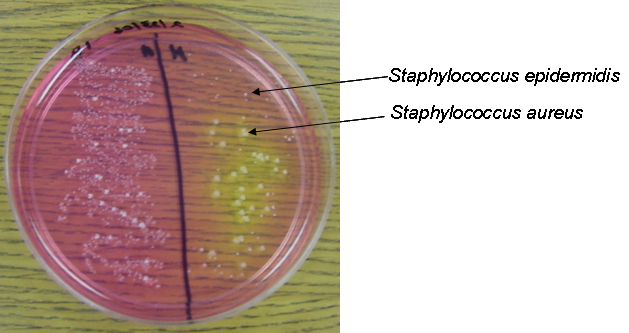
Normal Skin Flora
Staphylococcus

Staphylococcus epidermidis and Staphylococcus aureus are normal flora of the skin. S. aureus tends to be found in moist environments such as the nostrils and armpits, whereas S. epidermidis is usually found in drier areas of the skin. S. epidermidis is rarely pathogenic, whereas S. aureus is widely known as a troublesome opportunistic pathogen.
Staphylococcus are cultured on Mannitol Salt Agar plates, which selects for this halotolerant genus. S. aureus can be distinguished from S. epidermidis by its ability to ferment mannitol.
Diphtheroids
Non-pathogenic members of the genus Corynebacterium are also normal skin flora in humans. These organisms, termed diphtheroids, are normally found on the palms of the hands.
Diphtheroids are cultured on Mueller-Hinton-Tellurite (MHT) plates. If diphtheroids are present, they will produce gray or black colonies because they are able to reduce the tellurite in the media to tellurium, which appears as a gray or black precipitate.